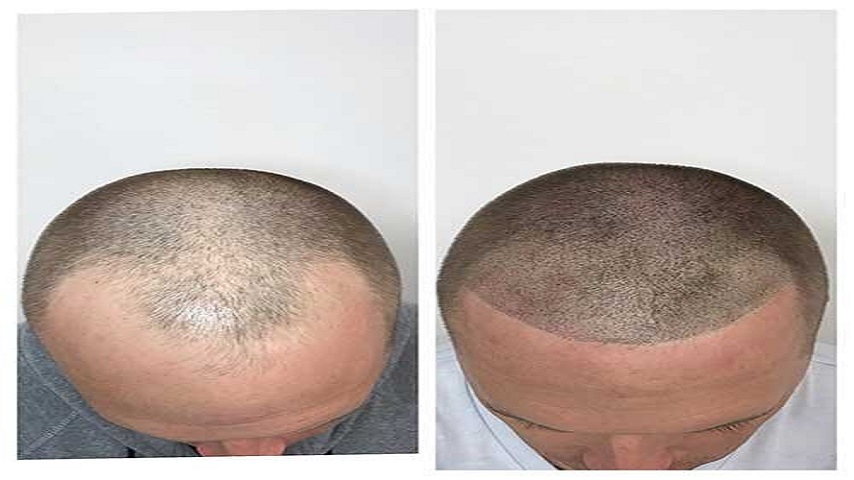
Hair thinning is a common concern that affects individuals of all ages, genders, and backgrounds. Whether it’s due to genetics, hormonal changes, nutritional deficiencies, or other factors, many people seek effective solutions to address this issue. While surgical options like hair transplants have gained popularity, non-surgical therapies have also emerged as viable alternatives. In this article, we will explore the world of non-surgical solutions for tackling hair thinning, with a focus on innovative approaches and the science behind their effectiveness.
Understanding the Causes of Hair Thinning
Before delving into non-surgical solutions, it’s crucial to understand the various factors that contribute to hair thinning. Genetics play a significant role, as individuals with a family history of thinning hair are more prone to experiencing it themselves. Hormonal changes, such as those occurring during pregnancy, menopause, or conditions like polycystic ovary syndrome (PCOS), can also impact hair density. Nutritional deficiencies, stress, and certain medical conditions like alopecia areata can contribute to hair thinning as well.
Non-Surgical Therapies: A Holistic Approach
Non-surgical hair restoration therapies aim to address hair thinning without resorting to invasive procedures. These approaches often take a holistic view, considering both internal and external factors influencing hair health. Let’s explore some of the most promising non-surgical solutions available today.
- Topical Treatments
Topical treatments are among the most widely used non-surgical options for combating hair thinning. These products typically come in the form of shampoos, conditioners, foams, or serums containing active ingredients that promote hair growth. Minoxidil, for example, is a FDA-approved over-the-counter medication that has shown effectiveness in promoting hair regrowth by increasing blood flow to the hair follicles.
Other topical treatments may include ingredients like ketoconazole, caffeine, and saw palmetto, known for their potential to inhibit the effects of hormones that contribute to hair thinning. While results may vary from person to person, consistent and prolonged use of these topical solutions can lead to visible improvements in hair density.
- Low-Level Laser Therapy (LLLT)
Low-level laser therapy is an innovative non-surgical option that uses red or near-infrared light to stimulate hair follicles and promote regrowth. This therapy is delivered through devices such as laser caps or helmets, which can be used at home. The light energy is believed to increase cellular activity and improve blood flow, creating a conducive environment for hair follicles to thrive.
Studies have shown that LLLT can be an effective and safe option for both men and women experiencing hereditary hair thinning. The convenience of at-home devices has made this therapy increasingly popular, allowing users to incorporate it into their routine without the need for frequent clinic visits.
- Platelet-Rich Plasma (PRP) Therapy
Platelet-rich plasma therapy is a non-surgical procedure that involves drawing a small amount of the patient’s blood, processing it to concentrate platelets, and then injecting the PRP into the scalp. Platelets contain growth factors that can stimulate hair follicles, promoting the development of new, thicker hair.
While research on PRP therapy for hair thinning is ongoing, some studies suggest that it can be a promising option, particularly when combined with other treatments. PRP is considered safe since it utilizes the patient’s blood, reducing the risk of adverse reactions.
utritional Supplements
Nutritional deficiencies can contribute to hair thinning, making dietary supplements an essential component of non-surgical hair restoration strategies. Supplements containing vitamins, minerals, and amino acids that support hair health, such as biotin, vitamin D, iron, and zinc, can be beneficial.
These supplements work internally to provide the body with the necessary building blocks for healthy hair growth. While they may not show immediate results, incorporating them into a balanced diet can contribute to overall hair health over time.
- Professional Consultation and Customized Plans
A crucial aspect of non-surgical hair restoration is seeking guidance from professionals who specialize in trichology or hair and scalp health. Trained experts can assess the underlying causes of hair thinning and develop personalized plans tailored to individual needs.
These plans may include a combination of the aforementioned non-surgical therapies, along with lifestyle modifications and stress management strategies. By addressing the root causes of hair thinning, these customized plans aim to provide long-term solutions and support ongoing hair health.
Conclusion
Strand Solutions encompass a diverse range of non-surgical therapies designed to tackle the complex issue of hair thinning. From topical treatments and low-level laser therapy to platelet-rich plasma and nutritional supplements, individuals now have a variety of options to choose from based on their preferences and needs. As the science behind non-surgical solutions continues to advance, these therapies offer promising alternatives for those seeking effective ways to restore and maintain healthy, voluminous hair without resorting to surgery. Ultimately, the key lies in understanding the unique factors contributing to each individual’s hair thinning and crafting a holistic approach that addresses those specific needs.
Thinning Hair: Unraveling the Root Causes for a Fuller Understanding